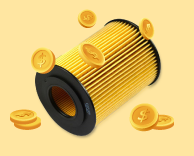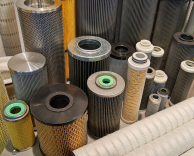Achieve Perfect Lubrication: 4 Essential Steps for Cost Savings & Energy Efficiency
Introduction
Even oil lubrication is one of the most important parts of machine maintenance. Beyond its basic job of providing a buffer between moving parts to decrease friction (and thus prevent excessive wear), appropriate lubrication improves the life of the machine, but it also increases the efficiency of operations by lowering the energy being used.
The trick is finding that sweet spot between adequate lubrication and overly lubrication. Failure to do so can lead to operational inefficiencies and premature equipment failure. In this article, we will highlight 4 of the most important steps to take to make the best out of every ounce of lubricant, and ensure you save money, energy, and have machinery work the best it can.
The Importance of Proper Lubrication
Lubrication is the cornerstone of smooth and reliable machine operation. Machines in which parts have high friction between them wear off faster, use more energy, and break down often. Proper lubrication:
- Lowers friction a lubricant creates a thin layer between two moving surfaces and provides two surfaces isolation from rubbing with each other which reduces the friction.
- Reduces heat buildup: Heat is produced from the friction that can overheat the machine. Because some of the energy lost to friction is converted to heat, lubrication helps dissipate the heat and keep the system operating in a proper temperature range.
- Increases the life of machines: Regular lubrication not only prevents frictional losses, unnecessary wear and tear, but also helps increase the life of machinery parts and decreases the breakdown of machines.
- Energy saving: Less friction means that, machinery has to put less effort and thus consume less energy.
On the other hand, wrong lubrication will cause adverse results like energy inefficiency, increased temperature, and breakdown of equipment. That's also why learning to tune the lube process is so important.
For More Information About Minimac Systems - Click Here
Common Lubrication Mistakes to Avoid
Although lubrication is widely known as an important consideration, many companies make a critical error in their lubrication practices. Here are some of the most common ones:
- Over-lubrication: A common misconception is that an excess of lubricant will enhance performance. And since it leads to excessive friction, waste, and even contamination of the machinery, it can create a lot of issues. Having too much lubricant can also contribute to energy consumption, since the additional lubricant becomes a layer of insulation, making it harder for heat to escape.
- Over and under-lubrication Conversely, under-lubrication is also very harmful. A lack of lubricant increases friction, which in turn leads to more wear, more breakdowns, and a reduced machine life.
- Using the wrong type of lubricant: Not all lubricants are equal. Your machinery may not be effectively protected with the incorrect type of oil or grease. In practice, for example, some lubricants are not effective under extreme temperatures, while others may be too easily broken down under pressure.
- Inconsistent lubrication frequency: You may have excess used lubricant or you may not be fair enough able to prevent wear and friction if you do not lubricate your equipment after a respective interval. Lubrication should be planned according to machine operation, environmental factors, and the speed of operation.
Such errors can render a company end up spending a lot during downtime, repairs, and also on energy costs. A well-planned lubrication schedule and diligent enforcement of the lubrication process can help to avoid these.
Step 1: Calculate the Correct Lubrication Schedule
An optimized oil lubrication schedule for every asset is your first step towards perfect oil lubrication. Most companies just continue to follow the same lubrication intervals for all machines that were mandated during normal configuration, which leads to over-lubrication or under-lubrication. This depends on the machine, its type, and how it is working, and obviously needs to be properly calculated.
Lubrication schedules: what should be taken into account
- Machine Speed: Slow-moving machines may need more regular lubrication because they aren’t able to spread lubricant around evenly over the parts due to a lack of movement. However, fast-moving machines require less lubrication because there is movement and it circulates in oil.
- Operating Environment: Machines that work in extreme heat or that are near contaminants may require more frequent lubrication. In a clean and rigorous environment, machines may only need lubricating less often.
- Load and Pressure: Heavy load and high-pressure working machines need more timely lubrication to reduce friction and wear.
- Temperature: Machines that operate in high or low temperature environments may require specialized lubricants that can endure those conditions. Scheduling appropriately will include precise volumes of lubricant.
Analyzing all these parameters helps companies to get the proper lubrication intervals and in making sure that the machines are well maintained without excessive usage of resources.
Step 2: Daily Pre-Trip Check by Machinery Operators
Aside from having your lubrication schedules in place, operators should perform pre-trip inspections before every use. This way, they can catch any early indications that there are lubrication issues present and stop expensive problems from developing.
Here are some daily checks that one may need to perform pre-trip:
- Viscosity check: Lubricants must be of the correct viscosity to offer effective friction reduction behavior. In case of replacement, this lubricant shall be replaced if it has thinned down due to excessive heat.
- Color check: While cloudy, discolored lubricant may be a sign of contamination. If the oil appears thick and opaque (like milk), or dark and gritty, it can be a sign of water or dirt entering the system.
- Level check: Operators must visibly check if the lubricating level is within limits. This ensures that the oil is not filled too much, which can be a waste due to leaks, and also not too little, which can lead to lubrication issues.
Establishing daily pre-trip checks enables operators to identify any contamination or lubrication deficits before they impact machine performance.
Step 3: Regular Cleaning of Lubricant Sumps
Lubra-cant sumps are the compartments of an oil holding container from which oil circulates. However, sumps can become contaminated with dirt, metal chips, sludge, and more over time. This will lower the effectiveness of the lubricant as these contaminants break down the lubricant, unless the sump is regularly cleaned.
The lubricant sump should be one of those maintenance tasks. Regular cleaning will:
- Prolong the oil life: Removes impurities, which can help the oil to last more efficiently for a longer time.
- Reduce varnish and sludge: These contaminants can block filters, coat equipment and create less efficient machines.
- Fewer oil changes: Proper sump management keeps the oil cleaner longer, meaning less need for frequent changes.
Step 4: Monitoring Key Lubrication Properties
There are a few important properties that their evolution must be monitored in order to ensure the lubricant continues to perform as required:
- Viscosity: The oil must have a level of viscosity that will help keep friction lower and afford protection. Oils that are low-viscosity will start breaking down faster and oils that are too thick create too much friction.
- Grease Consistency: The Consistency of grease should be firm enough that it does not fall out of its place and can lubricate the moving parts efficiently. If super-runny, the grease will ooze right out, and if too stiff, it may not move at all.
- Oil Volume:A Proper lubricant amount is important. Excessive oil can cause waste and increased energy consumption, while too little will cause overheating and overexploitation.
- Filtration: Maintaining debris-free oil is one of the most important aspects of preserving lubricant quality. Another filtration system that is doing its job well works to maintain the cleanliness and effectiveness of the oil for longer use.
This monitoring of these properties keeps the oil functioning to reduce friction, protect the machine and reduce wear rates.
Conclusion
Proper oil lubrication is not a universal concept. Operators need to better understand their machine, its working conditions, and the lubricant being utilized. The four basic steps in this article — calculating the optimum lubrication schedule, performing daily checks, cleaning sumps, and monitoring lubricant properties — will help businesses to save on maintenance costs and reduce energy consumption while increasing machinery performance and service life.
Learn more about our services and industry insights by visiting our official LinkedIn page: Minimac Systems
FAQs
Common Contaminants Found in Lubricants The most common contaminants present in lubricants are natural impurities, oxidation products, wear debris, and water.





